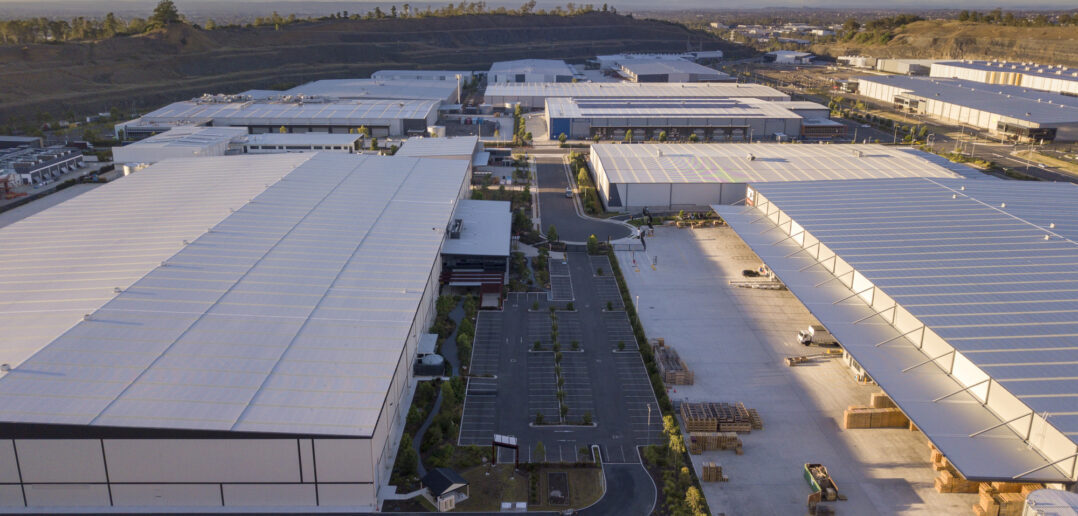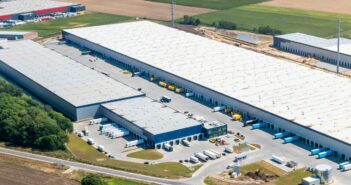How Geopolitical Forces and Sustainability Innovations are Reshaping Europe’s Industrial Landscape
Logistics is becoming the most geopolitically profitable asset class – Dr. Thomas Steinmuller, Afilog
The logistics sector is undergoing a profound transformation, transcending its traditional role to become a critical nexus of geopolitics, sustainability, and technological innovation. At MIPIM 2025, industry leaders gathered to explore this evolution and its implications for real estate investors, developers, and urban planners across Europe.
From R’s to D’s: A Sector in Transformation
Dr. Thomas Steinmuller of Afilog opened the session with a compelling framework for understanding the sector’s evolution. In 2022, logistics was defined by the « 6 R’s »: Resilience, Reindustrialization, Reshoring, Renewables, Rail, and Replenishment. By 2023, this had shifted to the « 6 D’s »: Decoupling, Digitization, Decarbonization, Durability, Demography, and Disruption.
Now in 2025, the industry has entered a new phase characterized by what Steinmuller described as « the journey from the gray swan to the white swan to the green swan » – a metaphor for the sector’s progression from traditional warehousing to technologically advanced and environmentally conscious distribution systems.
The Geopolitical Dimension
Logistrial is a political priority for Poland… ReArming Europe is seen as an advantage for real estate development in the industrial and logistical space – Adam Pustelnik, Deputy Mayor of Lodz City Hall
The panel, which included Jenny Hammerlund (Ontario Teachers’ Pension Plan), Bert Hesselink (CTP Invest), Adam Pustelnik (Lodz City Hall), and Ingo Steves (Swiss Life Asset Managers), highlighted how geopolitical forces are reshaping logistics demand across Europe.
Pustelnik emphasized that logistics has become a political priority, particularly in countries like Poland where manufacturing and distribution infrastructure are viewed as strategic assets for national security and economic resilience. The current focus on « ReArming Europe » has created new opportunities for industrial real estate, making the sector increasingly attractive to both developers and investors.
Dr. Steinmuller expanded on this theme, noting that logistics is becoming « the most geopolitically profitable asset class. » This new reality is driving demand from previously uncommon tenant types, including government agencies seeking secure storage for strategic stockpiles. The emphasis on security has even led to the development of underground storage facilities, reflecting growing concerns about supply chain resilience in an uncertain world.
Discussion around recent geopolitical shifts and electoral outcomes sparked debate about how political uncertainty is paradoxically strengthening demand for European logistics facilities. As Europe intensifies its efforts toward reindustrialization and defense self-sufficiency, the need for sophisticated logistics infrastructure continues to grow. This trend is creating what Steinmuller described as a unique moment where logistics benefits from multiple concurrent drivers – from reshoring of manufacturing to the building of strategic reserves.
Investment Hotspots and Market Dynamics
European logistics has repriced faster than most regions and asset classes, creating what Hammerlund described as a compelling entry point for investors. « There’s continued stability in rental income and moderate rental growth, » she noted, highlighting that inflation-linked leases in Europe make the sector particularly attractive in the current economic climate.
When asked about investment hotspots, Hammerlund emphasized that location fundamentals remain the primary driver. « The Netherlands is a strong market, parts of the UK, France and Paris in particular along with secondary cities with strong supply and demand fundamentals. Spain has created significant new opportunities, as have specific cities in Italy, » she explained. « It’s less about the markets but rather the macro-economic strength of the location itself. »
The Power of Placemaking
We need to make logistics more acceptable, more lovable, more desirable – Diana Diziain, Afilog Association
In the session’s second part, Diana Diziain of Afilog Association addressed one of the sector’s most persistent challenges: community acceptance of logistics developments. Presenting innovative approaches to improving the visual appeal and community value of logistics properties, Diziain challenged the industry to move beyond the « big gray boxes » that have defined industrial real estate for decades.
« We need to make logistics more acceptable, more lovable, more desirable, » she argued, showcasing exemplary projects that blend architectural excellence with community-oriented features. From multi-temperature warehouses with striking night illumination to facilities incorporating hundreds of trees, these developments demonstrate how industrial properties can become community assets rather than eyesores.
Warehouses as Infrastructure Hubs
PV on the roof is standard, storage of energy is the next step #WarehouseAsAPowerbank – Dr. Thomas Steinmuller, Afilog
Perhaps the most transformative trend discussed was the evolution of warehouses into multi-functional infrastructure hubs. Steinmuller highlighted how logistics facilities are increasingly serving as power generation and storage centers, water management systems, and platforms for technology deployment.
The sector is pioneering energy storage systems that transform warehouses into « power banks » for local communities, capable of storing solar energy generated during peak daylight hours and distributing it when needed. Similarly, innovative rainwater collection infrastructure is turning warehouse roofs into « water buffers » that serve dual purposes: providing reserves during dry seasons while mitigating flooding during extreme weather events.
Automation represents another frontier, with Steinmuller noting that demographic challenges are driving « cobotization » – the implementation of collaborative robots that work alongside human operators. This trend is set to accelerate with the integration of infrastructure for autonomous trucks, which Steinmuller predicted would be implemented within five years. Germany has already approved regulations allowing autonomous trucking between distribution points, potentially enabling 24-hour operations that dramatically increase efficiency.
Supply Constraints Drive Value
For investors, limited supply in key logistics corridors presents both challenges and opportunities. Ingo Steves emphasized the importance of understanding economic corridors and securing strategic sites, noting that « limited land supply is a key indicator for smart investments. »
This scarcity has driven developers to explore innovative solutions, with verticalization emerging as a key strategy. Diziain showcased multiple examples of multi-story logistics facilities across Europe and Asia, including a striking 256,000-square-meter six-level facility in Tokyo located just ten minutes from a subway station. Built on a former steel factory site, this brownfield redevelopment not only maximizes land use but incorporates community amenities including children’s spaces, a greenway, and emergency evacuation capabilities during flood events.
The focus on brownfield redevelopment represents more than just practical land acquisition – it embodies the sector’s growing commitment to sustainable development. Bert Hesselink described how CTP Invest has transformed former industrial sites, including an old textile factory that has become a thriving business park. These projects not only reclaim underutilized urban land but often incorporate advanced sustainability features, from extensive landscaping with hundreds of trees to innovative facade materials that enhance both aesthetics and environmental performance.
The Path Forward
As the logistics sector continues to evolve, successful players will need to balance commercial imperatives with community engagement and sustainability goals. The panel emphasized that collaboration between developers, investors, and public authorities is essential, with Bert Hesselink noting that « city cooperation with development is key to providing capital and growth to cities deemed as key economic hubs. »
The message from MIPIM 2025 is clear: logistics is no longer just about moving goods efficiently. It has become a complex system interconnected with energy networks, community infrastructure, and technological innovation. For investors and developers positioning themselves for the future, understanding these dynamics will be crucial to capturing the sector’s full potential.


